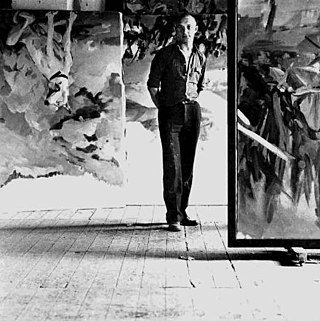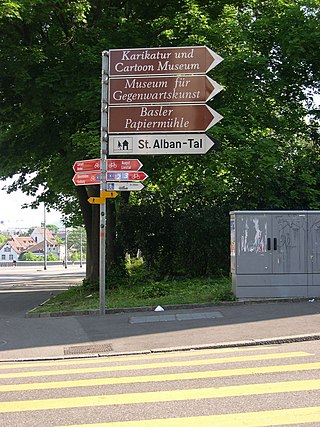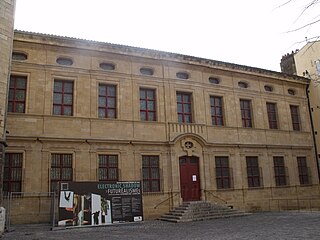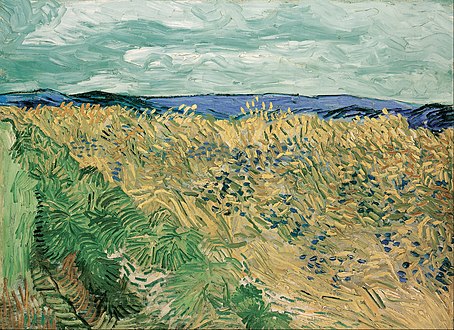
Alberto Giacometti was a Swiss sculptor, painter, draftsman and printmaker. Beginning in 1922, he lived and worked mainly in Paris but regularly visited his hometown Borgonovo to see his family and work on his art.

Basel, also known as Basle, is a city in northwestern Switzerland on the river Rhine. Basel is Switzerland's third-most-populous city, with 177,595 inhabitants within the city municipality limits. The official language of Basel is German, and the main spoken language is the local Basel German dialect.

Renzo Piano is an Italian architect. His notable buildings include the Centre Georges Pompidou in Paris, The Shard in London (2012), the Whitney Museum of American Art in New York City (2015), İstanbul Modern in Istanbul (2022) and Stavros Niarchos Foundation Cultural Center in Athens (2016). He won the Pritzker Architecture Prize in 1998.

Jean Philippe Arthur Dubuffet was a French painter and sculptor. His idealistic approach to aesthetics embraced so-called "low art" and eschewed traditional standards of beauty in favor of what he believed to be a more authentic and humanistic approach to image-making. He is perhaps best known for founding the art movement art brut, and for the collection of works—Collection de l'art brut—that this movement spawned. Dubuffet enjoyed a prolific art career, both in France and in America, and was featured in many exhibitions throughout his lifetime.

Georg Baselitz is a German painter, sculptor and graphic artist. In the 1960s he became well known for his figurative, expressive paintings. In 1969 he began painting his subjects upside down in an effort to overcome the representational, content-driven character of his earlier work and stress the artifice of painting. Drawing from myriad influences, including art of Soviet era illustration art, the Mannerist period and African sculptures, he developed his own, distinct artistic language.

Thomas Schütte is a German contemporary artist. He sculpts, creates architectural designs, and draws. He lives and works in Düsseldorf.

The Kunstmuseum Basel houses the oldest public art collection in the world and is generally considered to be the most important museum of art in Switzerland. It is listed as a Swiss heritage site of national significance.

The Basel museums encompass a series of museums in the city of Basel, Switzerland, and the neighboring region. They represent a broad spectrum of collections with a marked concentration in the fine arts and house numerous holdings of international significance. With at least three dozen institutions, not including the local history collections in the surrounding communities, the region offers an extraordinarily high density of museums compared to other metropolitan areas of similar size. They draw some one and a half million visitors annually.

Ernst Beyeler was a Swiss art dealer and collector, who became "Europe’s pre-eminent dealer in modern art", according to The New York Times, and "the greatest art dealer since the war", according to The Daily Telegraph. In 1982, he and his wife founded the Beyeler Foundation to show his private collection, which on his death was valued at US$1.85 billion.
Jean Planque (1910–1998) was a Swiss art collector.

When Will You Marry? is an oil painting from 1892 by the French Post-Impressionist artist Paul Gauguin. On loan to the Kunstmuseum in Basel, Switzerland for nearly a half-century, it was sold privately by the family of Rudolf Staechelin to Sheikha Al-Mayassa bint Hamad Al-Thani, in February 2015 for close to US$210 million, one of the highest prices ever paid for a work of art. The painting was on exhibition at the Fondation Beyeler, Riehen, until 28 June 2015.

The Musée Granet is a museum in the quartier Mazarin, Aix-en-Provence, France devoted to painting, sculpture and archeology. In 2011, the museum received 177,598 visitors.
Rudolf Staechelin was a Swiss businessman and art collector. He is considered one of the major Swiss collectors of the first half of the 20th century.
Janick "Jan" Krugier was a Polish born Swiss dealer in modern art most known for his relationship to the works of Pablo Picasso and a survivor of the Holocaust.
George David Thompson was an American investment banker, industrialist, and modern art collector, based in Pittsburgh. He started as a banker, but by 1945 was running four steel mills. In 1959 Pittsburgh's Carnegie Museum of Art rejected his offer of over 600 artworks, unwilling to build a gallery bearing his name, and he gradually sold much of his collection, including 88 works by Paul Klee and 70 by Alberto Giacometti, although he left the Carnegie Museum over 100 artworks when he died in 1965.
Helly Nahmad is an American art dealer and art collector. In 2000, he founded the Helly Nahmad Gallery in Manhattan, New York, which holds several fine art exhibitions each year featuring artists such as Pablo Picasso, Chaïm Soutine, Francis Bacon, and Giorgio de Chirico.

The Goulandris Museum of Contemporary Art is a modern art museum in Eratosthenous Street, Pangrati, Athens, Greece, opened in October 2019. It displays many of the works amassed by shipowner Basil Goulandris and his wife Elise Karadontis, who died in 1994, with an art collection valued at US$3 billion.

The Daros Collection is a Swiss private collection of modern art owned by the Stephan Schmidheiny family. At its core are comprehensive groups of work by Andy Warhol, Brice Marden, Cy Twombly, Willem de Kooning and Gerhard Richter.

Margarete Oppenheim was a German art collector and patron. She was among the first personalities to collect works of modern art in Germany and owned one of the largest collection in Germany.






















